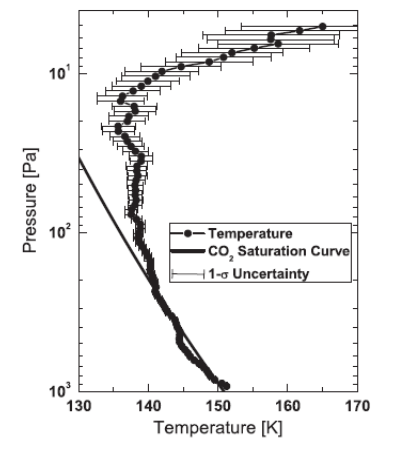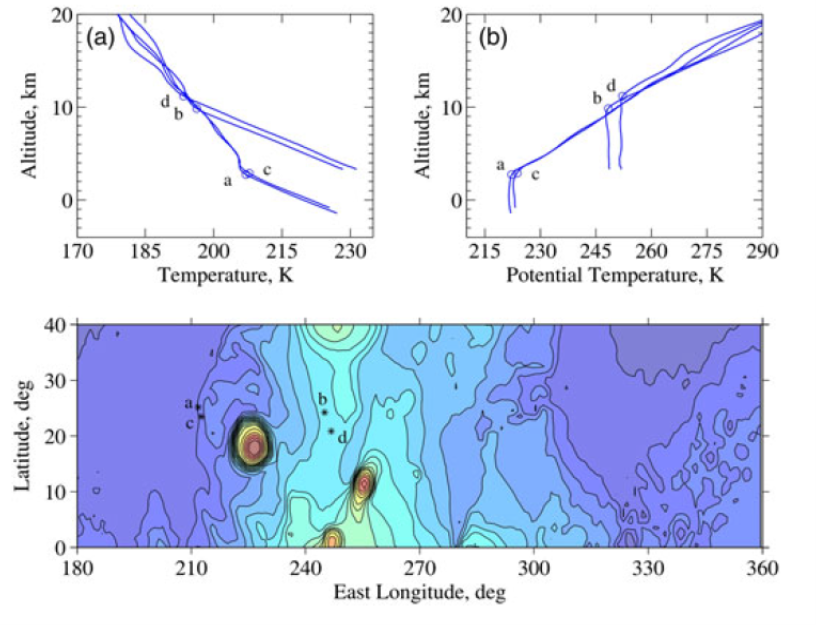The Mars Express Radio Science Experiment (MaRS)
The Mars Express Radio Science Experiment (MaRS) utilizes the radio subsystem of the spacecraft to investigate the atmosphere, ionosphere, gravity field, and surface of the red planet. As Mars Express is not equipped with an ultra-stable oscillator, the experiments are conducted using the so-called two-way method (see About Radio Science).
The radio occultations at Mars can cover the altitude range just above the surface (limited only by diffraction) up to an altitude of approximately 35-40 km (about up to a pressure of 5 Pa) (see Fig. 1). The temperature, pressure, and neutral particle density profiles have a vertical resolution of a few hundred meters, allowing the study of small-scale structures such as atmospheric gravity waves. The uncertainties in the temperature profile range from about 10% at the upper end of the measurement to fractions of a Kelvin at the lower end.

Figure 1: Typical MaRS temperature profile from the polar region (from (Tellmann et al., 2013)). The solid line represents the saturation curve of CO2.
Additionally, the MaRS experiment can resolve the near-surface boundary layer of Mars. As the Martian atmosphere exhibits pronounced diurnal temperature variations, a convective boundary layer develops near the surface during the daytime, extending up to several kilometers above the surface (see Fig. 2, also see (Hinson et al., 2008)). Due to the low density, the temperature cools significantly at night, forming a deep temperature inversion near the surface.

Figure 2: Near-surface boundary layer (from (Tellmann et al., 2013, Fig. 19)). (a) Four daily temperature profiles from low-lying areas (profiles (a) and (c)) and high-altitude regions (profiles (b) and (d)). (b) Corresponding potential temperature profiles. (c) Location of temperature measurements.
In addition to the neutral atmosphere, MaRS also evaluates electron density profiles in the ionosphere. Since Mars Express is in a highly elliptical orbit, these profiles can cover the entire topside of the ionosphere and the ionopause (see (Peter et al., 2014)). Sporadic third layers in the Martian ionosphere have also been discovered using this method (Pätzold et al., 2005).
MaRS has analyzed approximately 1000 neutral atmosphere and ionosphere profiles to date, with further experiments planned.
Furthermore, the MaRS experiment has conducted investigations of the planet's surface using bistatic radar measurements ('Bistatic Radar') (see (Simpson et al., 2006)).